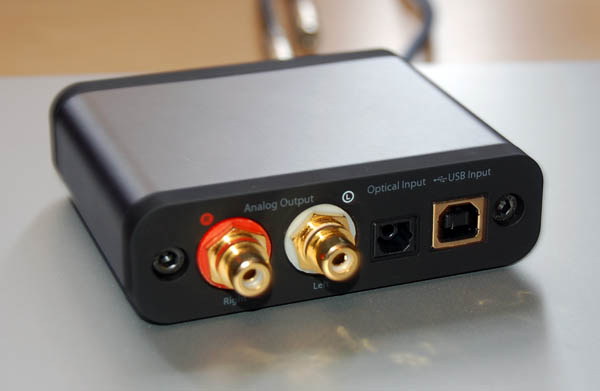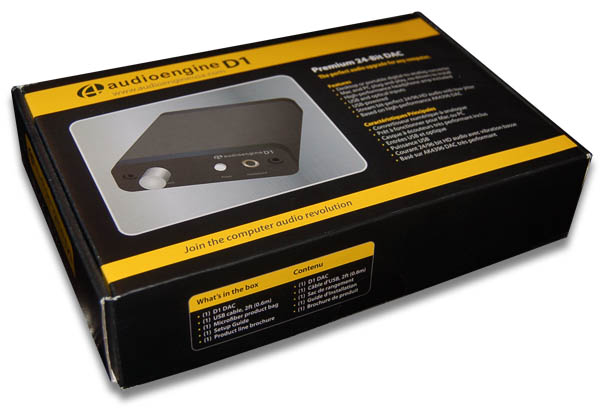SUMMARY
Many of us use our computers almost exclusively to play music. We have either accumulated significant digital collections on them, and/or have joined
one of the many online subscription services. When we play digital music stored in files like MP3s, OGGs or Flacs, or we stream it from online services,
it still has to be converted into analog sound so our amplifier can send it to the speakers and we can enjoy it. In most cases we leave this
very important task to the sound cards built into our laptops and desktops. While these devices do a reasonable job, consider this:
the average computer comes with an integrated sound system that costs somewhere between $5 and $20 built into its motherboard.
This sound system has many subsystems, including all your computer sound inputs and outputs for multiple speakers and headphones, mic,
plus the playback and recording functions and more.
As you can imagine, the quality of the components is going to be mediocre at best. The most important subsystem in your sound card
is the DAC - or digital-to-analog converter. It's a chipset responsible for converting the digital 1's and 0's in your files back into the music you listen to.
This article explains how to upgrade your computer sound system to use an external DAC to enjoy high definition, high quality sound.
AUDIOENGINE D1
You can spend almost any amount of cash you want on a DAC, from a couple dollars for the DAC that comes with your computer sound card, to tens of thousands
going into the silly and fun land of super high end audio. For the purposes of this review, I reduced the scope to DACs under $200, which seemed to
me like a reasonable amount of money. It's not going to break the bank, yet it lets us acquire units that do an excellent job. After considering about
2 dozen units that fit the bill, I settled on the Audioengine D1 24 bit Premium DAC. This is a fairly new unit, released within the last 2 months.




The Audioengine D1 DAC is the latest product from a company whose products are no nonsense in a hobby not exactly famous for no nonsense.
The Audioengine D1 is the Audioengine wired DAC priced at $169. It offers a 24-bit/96kHz input via USB and a 24-bit/192kHz input via optical Toslink. If you decide to use the latter, you'll still need to connect that USB port to your computer or to a USB power adapter (Audioengine sells one for $18.00) since the D1 gets its power from the USB input. On the front side of the D1 DAC you'll find a power LED indicator that doubles as the on/off button and lights up when the D1 is on/receiving, a 3.5mm headphone jack and a volume control knob.
Around back in addition to the above-mentioned USB and Toslink inputs you'll also find a pair of RCA outputs. If you use the USB input no drivers are required and if your computer has a USB 2.0 port or you have a MacBook Pro or soundcard with Toslink out, you'll be playing up to 24-bit/96kHz in no time without the need to install any drivers. For 24/192 capable soundcards on Windows PCs, you'll need to install drivers because Windows does not support USB Audio Class 2.0.
Packed into the tiny package with its black matte end caps and dark gray metal body, sits the AKM4396 DAC, CS8416 Toslink receiver, TI1020B USB controller and a TI NE5532 op amp amplifying the headphone output. The USB circuit is run in adaptive mode which means the D1 receives its clocking signal from your computer as opposed to Asynchronous mode USB that sits the clock in the DAC, more or less. The entire D1 package includes a 2' USB cable and a Microfiber bag to keep your D1 warm at night and safe on trips.
How Good Can A Tiny DAC Be?
The Audioengine D1 sounds all of its $169 asking price and in my opinion surprisingly more. I used the D1 DAC with both my MacBook Pro and my Shuttle desktop, connected
to a JVC stereo amplifier and a pair of KLH speakers with a passive subwoofer. I have had this stereo & speakers configuration for about 10 years now, so I am quite familiar with the sound it produces so I can appreciate subtle changes.
I have tested other DACs with the same system, and if you are wondering whether the Audioengine D1 DAC is better than a $2k Ayre QB-9 let me tell you: it is not. Audiophiles tend to prefer the lean and harsh sound from "accurate" DACs. However, in my experience, 99 out 100 of us will pick the sound produced by the Audioengine in a second.
If you listen to MP3s at 128kbps, 192kbps, 256kbps and 320kbps, or 16/44 ripped CDs that are not audiophile-grade recordings, you'll love the D1 DAC. If you stream music from services like MOG or Spotify you'll love the D1's rich and saturated sound. It makes the music most of us listen to actually fun and enjoyable.
I preferred the USB input mainly because I enjoyed listening to everything I played through it and I appreciate a simple setup and using a USB cable to power the D1 and Toslink for audio seems like a waste of cable. Besides, the MacBook Pro's Toslink output is limited to 24-bit/96kHz so the only real gain is one of preference. Certainly you could make the argument that Toslink offers better isolation from computer-generated noise that can travel on the USB bus, thus reducing jitter. And I wouldn't disagree in theory. In practice, enjoyment trumps theory.
Another aspect of the Audioengine D1 DAC that goes into my plus column is its way with bass which is pleasantly plump and impact-full. It is by no stretch thin-sounding which runs counter to a few audiophile theoretical cliches including price (cliche: inexpensive stuff sounds thin) and power supply (cliche: only stuff with beefy power supplies can offer phat bass). If I were to generalize further I'd say the D1 DAC offers a more physical sound as opposed to a headier one; body versus mind, more balls than brains.
If you choose to use the D1 DAC as a headphone amp connected to your computer, I tried this setup with my iMac and Audio-Technica ATH-W1000s, you're in for a real treat. Compared to plugging your headphones directly into your computer and using its internal DAC, the D1 sounds like music while the computer sounds like three week old unrefrigerated chopped liver smells. For those with lots of frequent flyer miles, the D1 would make a nice, simple, and lightweight travel companion. Unfortunately the D1 does not work with the Apple Camera Connection Kit so you cannot tether it to your iPad in this manner.
If you connect a pair of Audioengine A2s, A5s, or A5+ powered speakers to the D1 DAC you will get bigger, badder (in a good way) sound vs. connecting them directly to your computer, with very strong bass. This setup represents a lot of desktop musical fun for a total audio system price of $369 + cables.
Fun & Enjoyment for All
Let the D1 settle for about 40 hours, following the manufacturer specs, and the sound gets even better. If it's not already obvious, I very much like this unit,
and recommend it to anybody who enjoys music at any level. You will not be disappointed, this represents a significant step up from most built-in computer audio systems
 
Price: $169.00
Buy Now: Audioengine D1 Digital-to-Analog Converter
END
|